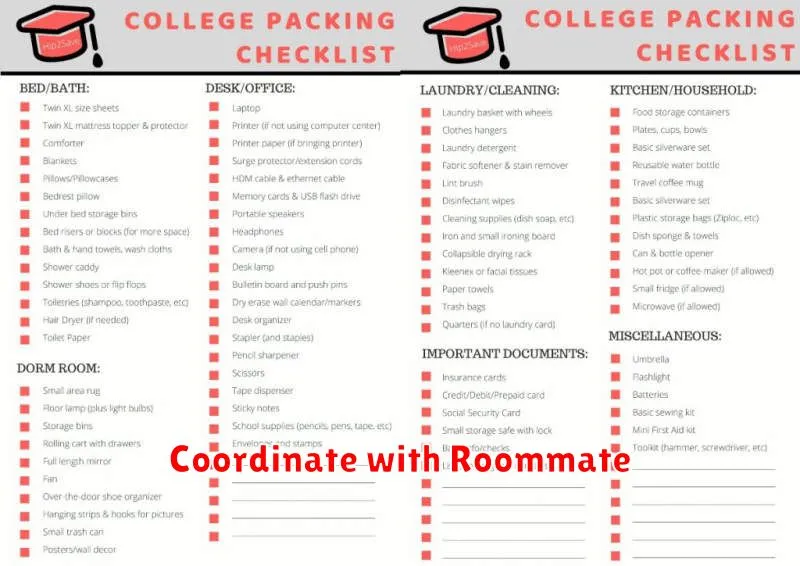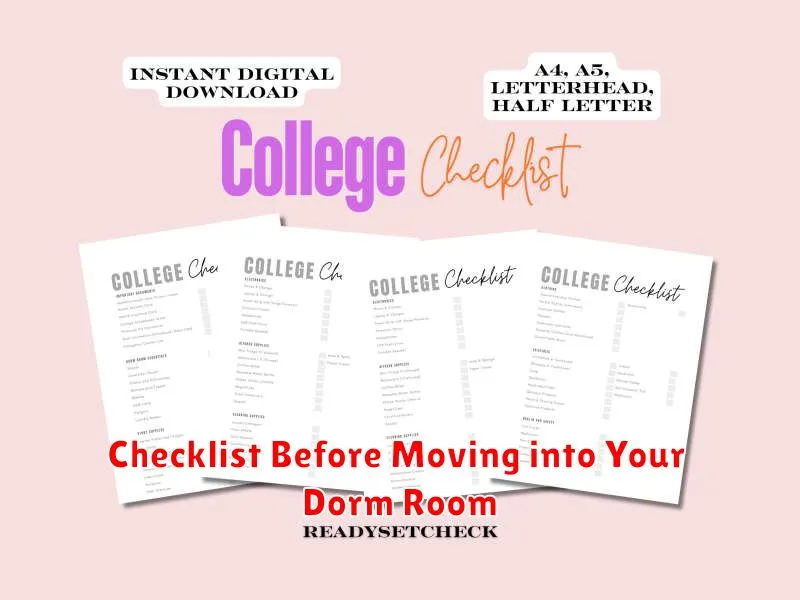Moving into a dorm room marks a significant milestone, symbolizing the exciting transition to independent college life. Successfully navigating this transition requires careful planning and preparation. This comprehensive checklist ensures you’re fully equipped for dorm living, encompassing all the essential items you’ll need. From bedding and bathroom supplies to electronics and study materials, this checklist covers every aspect of dorm room preparation. Avoid the stress of last-minute scrambling by utilizing this guide to seamlessly settle into your new dorm room. Whether you’re a freshman embarking on your first year or a returning student, this checklist will prove invaluable in ensuring a smooth and comfortable move-in experience.
This checklist goes beyond simply listing items; it provides valuable insights into making the most of your dorm room space. Learn how to optimize limited storage, create a conducive study environment, and personalize your space to feel like home. We cover everything from room essentials like mini-fridges and microwaves to often-overlooked items like power strips and first-aid kits. Utilize this dorm room checklist to transform your new space into a comfortable and functional home away from home, ensuring you’re well-prepared for a successful academic year. Moving into your dorm room will be a stress-free and organized process, allowing you to focus on the excitement of starting this new chapter.
Confirm Housing Assignment and Move-In Date
Before you start packing, confirm your housing assignment. This includes your dorm building and room number. Check your student portal or contact the housing office if you have any questions.
Equally important is confirming your official move-in date and time. This information is usually communicated along with your housing assignment. Adhering to the designated schedule ensures a smooth move-in process for everyone.
Pack Only What You Need
Dorm rooms are notoriously small, so resist the urge to overpack. Carefully consider what you’ll actually use on a regular basis.
Create a packing list categorized by essentials like bedding, toiletries, and study supplies. Prioritize functionality and versatility. A multi-purpose tool is better than several single-use items.
Check with your roommate beforehand to avoid bringing duplicates of large items like mini-fridges or microwaves.
Check Dorm Policies
Before moving in, thoroughly review your dorm’s policies. Guest policies often dictate how long guests can stay and if overnight guests are permitted. Understanding these rules will prevent issues later.
Quiet hours are essential for a conducive study environment. Familiarize yourself with these times to avoid disturbing others. Also, check policies regarding prohibited items. Many dorms restrict items like candles, hot plates, and certain electronics for safety reasons.
Bring Identification and Documents
Ensure you have all necessary identification and documents. This includes your student ID, driver’s license, and health insurance card. Having these readily available will streamline check-in and any necessary administrative tasks.
Also, bring important documents such as your acceptance letter, housing contract, and any financial aid paperwork. Keep these documents organized in a secure folder for easy access.
Label All Your Boxes
Labeling your boxes is crucial for a smooth move-in experience. Clearly mark each box with its contents and the room it belongs in (e.g., “Bedding – Bedroom,” “Textbooks – Desk”).
This will help you and anyone assisting you quickly identify where each box needs to go, saving you valuable time and effort on move-in day.
Consider using a numbering system to keep track of all your boxes and ensure none are missing. For example, write “Box 1 of 5 – Kitchen Supplies” on the first of five boxes containing kitchen items. This is especially useful if you have many similar items.
Coordinate with Roommate

Communication is key for a harmonious living environment. Reach out to your roommate before moving in to discuss essential shared items.
Consider creating a list of who will bring what to avoid duplicates and clutter. Common shared items include a mini-fridge, microwave, and rug. Decide who is responsible for bringing each item to avoid redundancy.
Discuss preferences for room decor, temperature, and quiet hours to ensure a comfortable living space for both of you. Addressing potential lifestyle differences beforehand can prevent future conflicts.
Prepare Cleaning Supplies
Maintaining a clean living space is essential for a comfortable dorm experience. Pack essential cleaning supplies before you arrive to ensure a smooth move-in.
Consider bringing disinfectant wipes for quick cleanups, an all-purpose cleaner for various surfaces, a toilet bowl cleaner, and a trash can with trash bags. A small handheld vacuum can also be useful for quick cleanings, and a dustpan and brush are great for picking up small messes.
Double Check Tech Essentials
Before settling into your dorm, ensure your tech setup is ready to go. A laptop is crucial for academics, while a phone keeps you connected. Don’t forget essential accessories like chargers and headphones. A portable hard drive offers extra storage for important files.
Consider a printer, although shared facilities might be available. If you plan to bring a TV, check dorm policies regarding size and allowed devices. Lastly, a surge protector is highly recommended to protect your valuable electronics.
Know the Campus Map
Familiarizing yourself with the campus map is crucial for a smooth transition into dorm life. Locate key buildings like your dorm, classes, the dining hall, the library, and student services.
Understanding the campus layout will help you navigate efficiently, especially during the first few weeks. This knowledge minimizes stress and allows you to focus on academics and social activities.
Secure Transportation
Arranging transportation is a crucial step in your move-in process. Determine whether you will drive your own vehicle or utilize other options.
If driving, reserve parking in advance if required. Consider the size and accessibility of loading areas at both your current residence and the dorm.
If using alternative transportation such as a ride-sharing service or renting a moving truck, book ahead to secure availability, especially during peak move-in periods.

